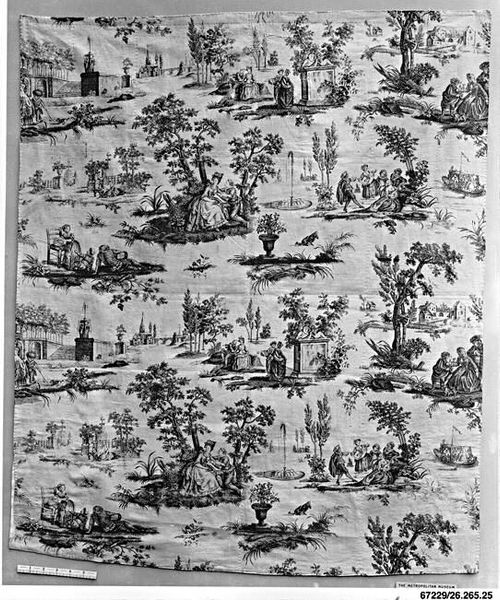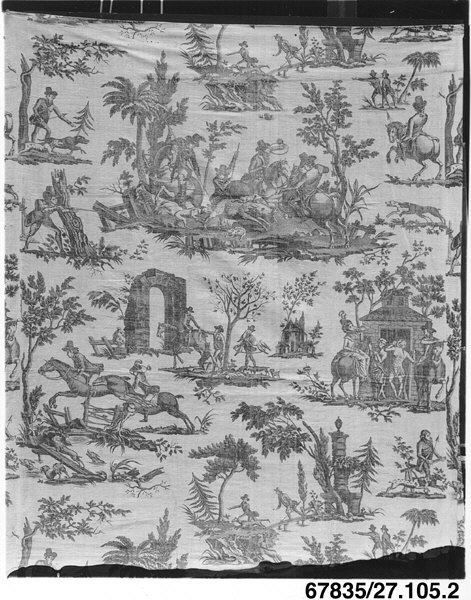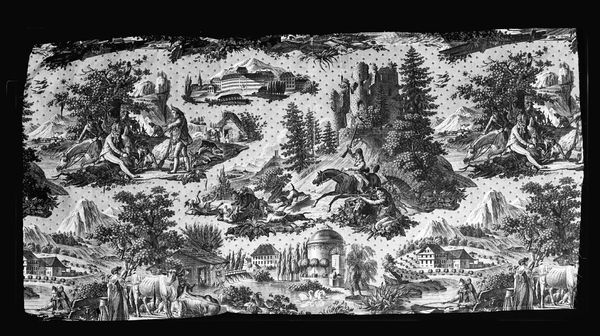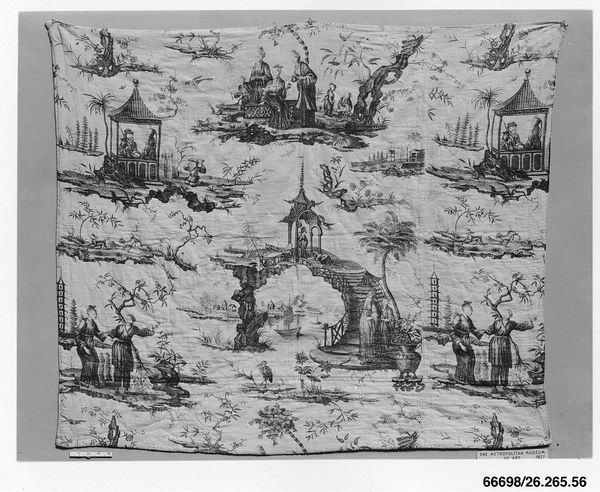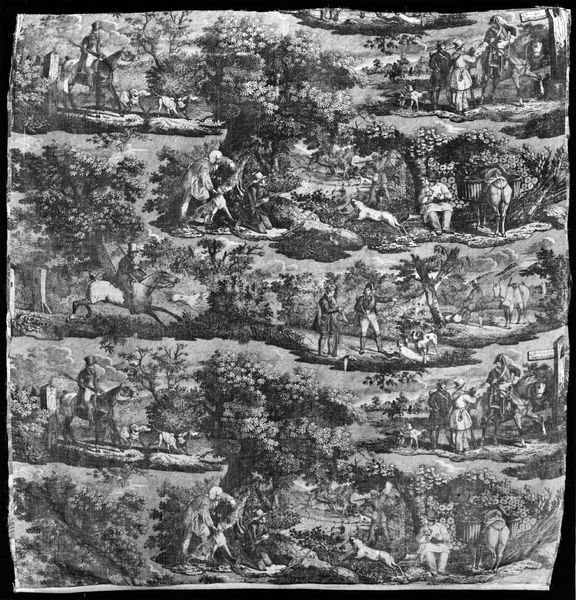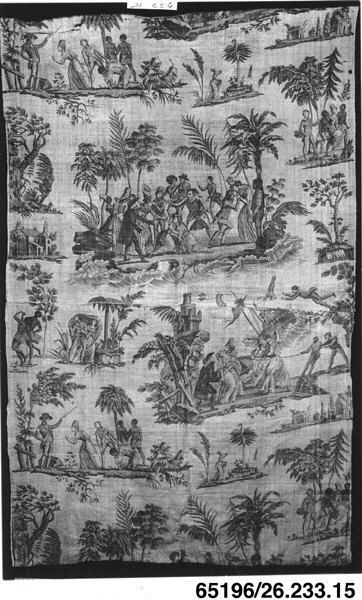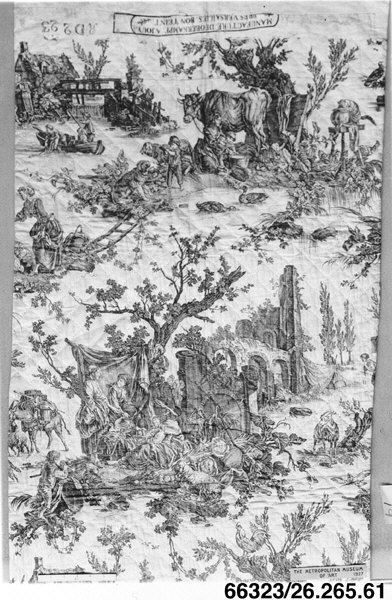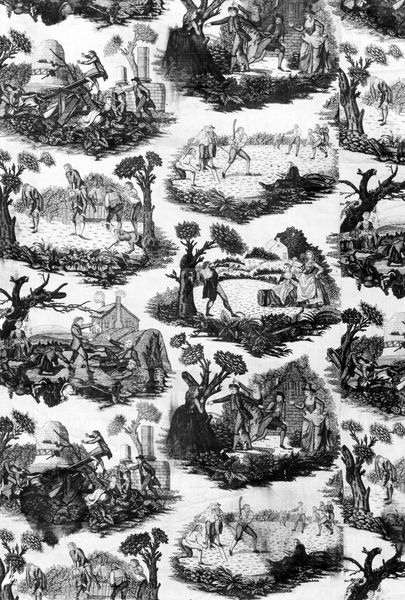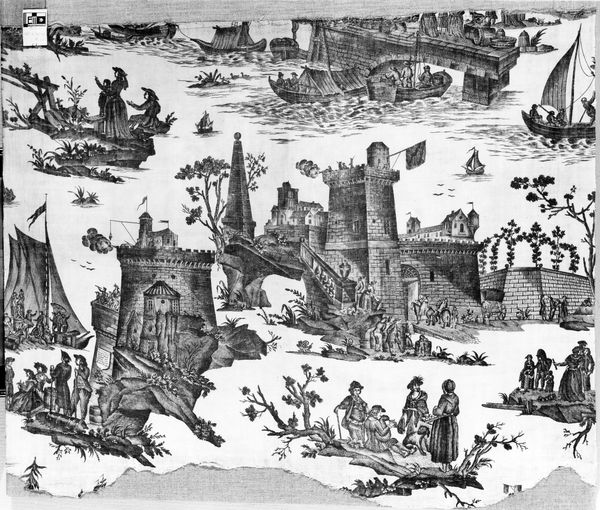
print, textile
# print
#
landscape
#
textile
#
figuration
#
line
#
genre-painting
#
decorative-art
Dimensions: 117.5 × 152.1 cm (46 1/4 × 59 7/8 in.) Repeat: 99.8 cm (39 1/4 in.)
Copyright: Public Domain
Curator: Here we have a textile marvel: "Les Vendages," a furnishing fabric crafted by the Oberkampf Manufactory around 1785. What strikes you first? Editor: It evokes a dreamscape! The playful scenes and monochromatic palette create a strangely calming yet animated tableau. A rustic fantasia for the eyes. Curator: Indeed. Note how the designer employed delicate line work and stippling to build form and space. It’s a masterful print, isn't it? Look at the recurring vignettes: swinging children, dancing figures, workers hauling barrels, all nestled within this repeating pastoral motif. Editor: That idyllic imagery masks the social realities of the time. "Les Vendages"—the grape harvests. These were immensely demanding for rural communities, especially with the rise of industrial practices favoring profit. Do the people in the scene benefit equally? Who truly enjoys this vintage? Curator: An incisive point. One might also interpret this as the industrialization of leisure, with repeating motifs used for mass production to normalize ideals of leisure for a burgeoning middle class. Look how the pattern denies singular focus. The interplay and symmetry becomes an artwork suitable for Romantic sensibilities. Editor: The continuous repeat diminishes any individual narrative or identity of those within it. It aestheticizes labor and perhaps promotes a sanitized view of country life in that era, far removed from the hardship experienced. This form of Romanticism almost seems... exploitative. Curator: Formally speaking, though, observe how skillfully the artisans used copperplate printing. They evoke depth within a flat plane, building visual textures to elevate simple textile work. The figures intertwine to make for both harmony and legibility. Editor: The textile is captivating, regardless. As decor, it would invite continuous engagement and interpretation. The contrast between form and history urges questions: is this merely art, or a sociopolitical statement rendered in fabric? Curator: An exquisite challenge to how we interpret the aesthetics. Perhaps we should allow that dialectic to resonate, driving us to remember the artwork. Editor: I agree. It is important to remain inquisitive of the threads of culture weaved through such textiles, lest we ignore a silent history within.
Comments
No comments
Be the first to comment and join the conversation on the ultimate creative platform.

